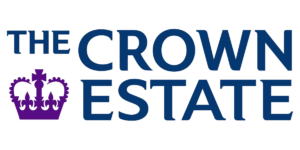Managing marine resources for sustainability and profit
Responsible for a multi-billion pound portfolio of land, the Crown Estate has to make important decisions that balance the needs of the environment against plans to maximise revenues.
Its use of Esri’s ArcGIS platform enables it to undertake faster modelling of complex scenarios, enabling it to save £135,000 in staff costs in six months alone.
The Customer
The Crown Estate manages a multi-billion pound portfolio across the UK: urban, rural, Windsor and marine estates. It has a duty to enhance their value, minimise environmental impact, maximise revenue and give profit to the Treasury.
Marine assets include around half the foreshore, half the beds of estuaries and tidal rivers, and almost the entire seabed out to 12 nautical miles – almost three times the area of Great Britain, and including 22,000 km of coastline. It controls the rights to explore and utilise natural resources of the continental shelf (excluding oil, gas and coal), granting leases or licences for ports and harbours, conservation, offshore renewables (wind, wave and tidal), aggregate dredging, pipelines/cables, and aquaculture. Over the last decade, revenue has grown 70%, delivering £1.8bn profit.
ArcGIS is used to map existing demand and the future potential of marine estates, providing valuable insight to support decision making
The Crown Estate recognises that it has saved time and money in highlighting the potential for off-shore wind farm development
GIS analysis allows the organisation to see potential conflicts between activities, and help to identify the optimum compromises
The Challenge
The Crown Estate needed advanced knowledge management and decision support systems to analyse and manage increasingly complex marine activities and balance diverse interests of stakeholders. Most of the data had a locational element, and the number and type of parameters involved were unparalleled, so a geographic information system (GIS) was key. The challenge was to build a toolset to analyse multiple datasets. “We needed a more comprehensive understanding of the value of our marine estate in order to manage its future to the best of our ability”, explained Peter Lawrence, MaRS Programme Manager.
Esri had the scalability and openness we needed to build what is one of the most comprehensive, integrated GIS data sources that the UK now possesses
Peter Lawrence – MaRS Programme Manager
The Solution
The Crown Estate invested almost £4m to create a sophisticated GIS analysis tool, Marine Resource System (MaRS), using ArcGIS to build a spatial database of every national dataset (currently 450). “Esri had the scalability and openness we needed to build what is one of the most comprehensive, integrated GIS data sources that the UK now possesses”, commented Lawrence. A desktop GIS tool for non-specialists was next: users connect to the spatial database, select data layers, view associated policies, and select inputs or constraints to do multi-criteria analysis.
MaRS is used to map existing demand and future potential of marine estates, helping pick areas to develop, while mitigating conflicting interests. “MaRS is a sophisticated decision-support tool which automates our constraint analysis. The results help us decide if building a wind farm is more suitable and sustainable than dredging for sand, for example, and what the monetary value is”, said Lawrence. “The resulting map is supported by the policies, rules and data analysed and used within the Estate’s business planning to make sure an activity fits our overall business strategy.”
The result is a sustainable plan that exists in space and time – we don’t think so many variables have been brought together for this type of analysis anywhere else in the world
Peter Lawrence – MaRS Programme Manager
The Benefits
The Crown Estate can better manage its marine estate in several ways:
Ensuring future energy supplies
The UK is the world’s largest producer of offshore wind energy, and wind is the fastest growing renewable – but more is needed. EU targets require 15% of the region’s energy from renewables by 2020, and UK government targets require an 80% reduction from 1990 levels of carbon emissions by 2050. “MaRS has helped de-risk the investment opportunity for international wind farm developers and has saved at least a year and millions of pounds… The information we now have available from MaRS helps show how the UK is one of the most attractive prospects for offshore wind development that exists today – great for both our economy and providing us with new sources of energy”, said Lawrence.
Balancing conflicting interests
“As more activities compete for the same space, MaRS analysis will be vital to help assess both short-term demands and long-term considerations”, Lawrence explains. For example, building an oil pipeline over an area licensed for aggregate dredging would have lost dredging revenue of almost £120m. Using MaRS, a compromise was implemented, safeguarding revenues.
Operational efficiency
A typical model to analyse consent issues has 90-120 data layers, and the analysis over 400 separate geo-processing steps. MaRS automates this, saving an estimated hour per layer, allowing the team to run models simultaneously or in quick succession. This saved over 300 days in six months, equating to £135,000 in staff costs.
New markets
“Ideally MaRS will become a global product to help establish best practice in cross-border marine resource planning. This would make collaboration and co-operation easier on joint initiatives, such as super grids or carbon capture”, said Lawrence. “Esri has helped us create a system which streamlines the complex GIS analysis of our marine assets, improving our ability to plan and direct our business. Being able to assess what’s best for our economy, the population and environment is of paramount importance both for today and for future generations”, concluded Lawrence.



